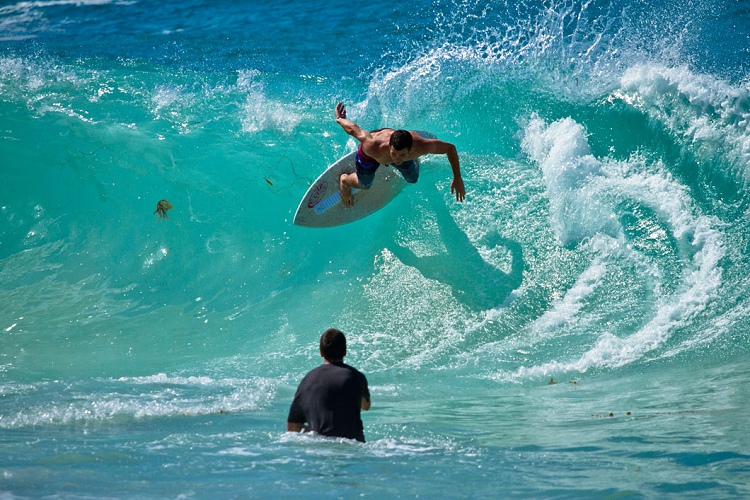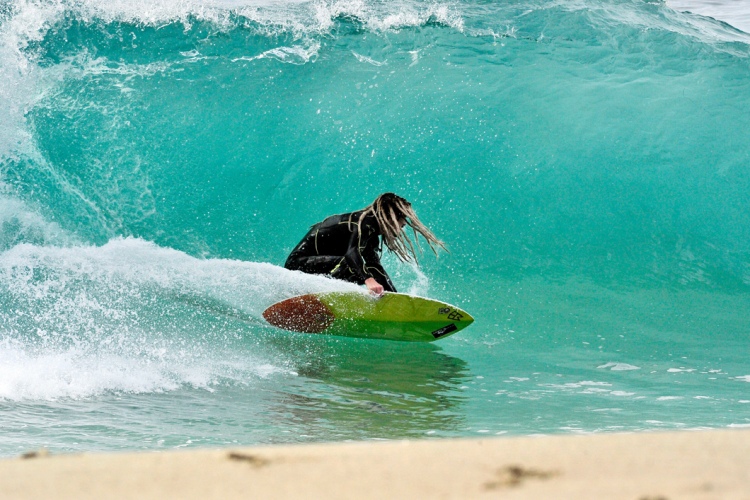Few things compare to the unique experience of skimboarding. Most people glance at a skimboard and wonder why it doesn't sink into the sand as soon as they step on it. Instead, you glide across the water effortlessly.
When you've mastered the sport, you can even take your board out into the breakers, skimming toward the waves and riding them for a brief amount of time, like surfers.
You might feel like a god as you rush across the surface of the water, but have you ever wondered how skimboarding actually works?
There are actually a few simple physics lessons to be taught here. Read on to learn about the science behind skimboarding, and be ready to say, "Whoa, dude!"
Waking and Displacing
A skimboard is a small watercraft similar to a boat but uses human power instead of an engine.
Both have one thing in common - when they move, they displace water. The more water they displace, the slower they move.
Since human power can only make the board go so far, the goal of skimboarding is to conserve energy. If the skimboard is pushing a large amount of water aside, that means the user will lose energy and slow down.
That's why skimboards work perfectly in shallow water - they have less water to displace.

It's All About the Ground Effect
It's not just the shallow water itself that makes a skimboard work. Because the board is so close to the ground, tiny masses of swirling water are formed under the board.
This happens when the board squeezes the water downward, but the ground squeezes it back upward. This is called the ground effect.
These vortices of water prevent the board from touching the sand. This creates the skimming effect until you hit deeper water, where buoyancy and speed are needed to keep skimming.
To provide an example, think of a helicopter hovering just after takeoff, almost touching the ground.
The blades whip up air into swirling vortices, which keep the helicopter aloft even though it just left the ground.
This effect allows the helicopter to "skim" along the ground at low altitudes, and you can see the swirling air in action when the blades kick up dirt and dust particles.
Does "Pumping" Really Work?
A common term among skimboarders is "pumping." This refers to the motion a skimboarder makes with their legs when they reach deeper water so that they stay afloat.
Skimboards have a smaller surface area than surfboards. This means that they don't stay afloat as long as surfboards, and that's why skimboarders need to pump when they reach breakers.
To pump, a skimboarder stomps their front foot up and down on the top of the board, which supposedly makes them stay afloat longer and travel faster and farther across the water.
What's surprising is this motion actually makes a skimboarder go slower. But that doesn't mean the board will sink just yet.
Pumping is a rocking motion - rocking the board back and forth creates a small burst of momentum that temporarily rests the board on top of the water.
When skimboarders repeat this motion rapidly, the board sinks and hops out of the water continuously.
See, sometimes science can be fun! Skimboarding has been gaining popularity lately, but not many people know the science behind it.
Now that you're well-versed in the mechanics of skimboarding, you can teach your friends something new while catching some gnarly waves.
Words by Scott Huntington | Writer, Traveler, and Extreme Sports Fanatic
